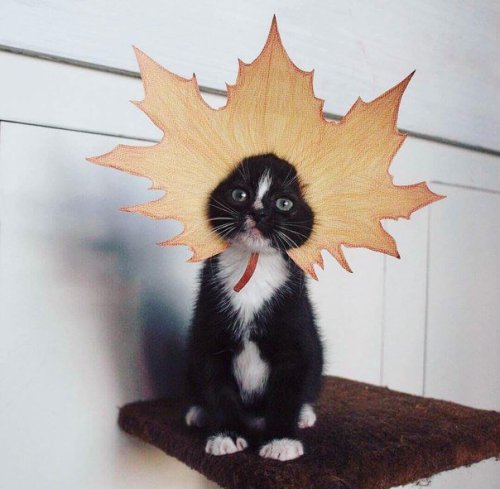Your personal Tumblr library awaits
Biodiversity - Blog Posts

THE PARADOX OF THE PLANKTON EXPLAINED BY COMPUTER SIMULATION
The paradox of the plankton results from the clash between the observed diversity of plankton and the competitive exclusion principle, which states that, when two species compete for the same resource, ultimately only one will persist and the other will be driven to extinction. With phytoplankton this is different, despite the limited range of resources, as is light, nitrate, phosphate, silicic acid, iron, a large number of species coexist, all competing for the same sorts of resources.
Now, a new math model explains such biodiversity. To understand this paradox researchers created a conceptual model for a theoretical community. Where each member of that community consumes one type of resource, and consuming it causes the production of exactly two new resources. Also, any new member could only survive if there is an open niche, or if it was better to exploit a resource than a current member. But with this computer simulation, researchers discovered that its simple rules led to a virtual community that, like the bacterial or phytoplankton communities, this hypotethical community was diverse and stable, and in fact became increasingly stable to as organisms diversified.
Resource competition and metabolic commensalism -where one organism benefits from the other without affecting it- drive a healty and diverse ecosystem. Researchers demonstrate that even when supplied with just one resource, ecosystems can exhibit high diversity and increasing stability. Despite early stages where massive die-offs scenes occured, as time passed and community grew more stable, these became less common. Affortunately to phytoplancton species, two communities under ideal conditions can develop so differently from one another, without producing extintions.
Photo: Gordon T. Taylor.
Reference: Goyal and Maslov, 2018. Diversity, Stability, and Reproducibility in Stochastically Assembled Microbial Ecosystems, Physical Review Letters
![Despite Its Green Image, Ireland Has Surprisingly Little Forest. [...] [M]ore Than 80% Of The Island](https://64.media.tumblr.com/a9dc12d8291af706c253bb0666518943/cf473bf11a974cf4-31/s500x750/596eacfd10775c8a467d662bc53bc1d8426cf1c2.png)
Despite its green image, Ireland has surprisingly little forest. [...] [M]ore than 80% of the island of Ireland was [once] covered in trees. [...] [O]f that 11% of the Republic of Ireland that is [now] forested, the vast majority (9% of the country) is planted with [non-native] spruces like the Sitka spruce [in commercial plantations], a fast growing conifer originally from Alaska which can be harvested after just 15 years. Just 2% of Ireland is covered with native broadleaf trees.
Text by: Martha O’Hagan Luff. “Ireland has lost almost all of its native forests - here’s how to bring them back.” The Conversation. 24 February 2023. [Emphasis added.]
---
[I]ndustrial [...] oil palm plantations [...] have proliferated in tropical regions in many parts of the world, often built at the expense of mangrove and humid forest lands, with the aim to transform them from 'worthless swamp' to agro-industrial complexes [...]. Another clear case [...] comes from the southernmost area in the Colombian Pacific [...]. Here, since the early 1980s, the forest has been destroyed and communities displaced to give way to oil palm plantations. Inexistent in the 1970s, by the mid-1990s they had expanded to over 30,000 hectares. The monotony of the plantation - row after row of palm as far as you can see, a green desert of sorts - replaced the diverse, heterogenous and entangled world of forest and communities.
Text by: Arturo Escobar. "Thinking-Feeling with the Earth: Territorial Struggles and the Ontological Dimension of the Epistemologies of the South." Revista de Antropologia Iberoamericana Volume 11 Issue 1. 2016. [Emphasis added.]
---
But efforts to increase global tree cover to limit climate change have skewed towards erecting plantations of fast-growing trees [...] [because] planting trees can demonstrate results a lot quicker than natural forest restoration. [...] [But] ill-advised tree planting can unleash invasive species [...]. [In India] [t]o maximize how much timber these forests yielded, British foresters planted pines from Europe and North America in extensive plantations in the Himalayan region [...] and introduced acacia trees from Australia [...]. One of these species, wattle (Acacia mearnsii) [...] was planted in [...] the Western Ghats. This area is what scientists all a biodiversity hotspot – a globally rare ecosystem replete with species. Wattle has since become invasive and taken over much of the region’s mountainous grasslands. Similarly, pine has spread over much of the Himalayas and displaced native oak trees while teak has replaced sal, a native hardwood, in central India. Both oak and sal are valued for [...] fertiliser, medicine and oil. Their loss [...] impoverished many [local and Indigenous people]. [...]
India’s national forest policy [...] aims for trees on 33% of the country’s area. Schemes under this policy include plantations consisting of a single species such as eucalyptus or bamboo which grow fast and can increase tree cover quickly, demonstrating success according to this dubious measure. Sometimes these trees are planted in grasslands and other ecosystems where tree cover is naturally low. [...] The success of forest restoration efforts cannot be measured by tree cover alone. The Indian government’s definition of “forest” still encompasses plantations of a single tree species, orchards and even bamboo, which actually belongs to the grass family. This means that biennial forest surveys cannot quantify how much natural forest has been restored, or convey the consequences of displacing native trees with competitive plantation species or identify if these exotic trees have invaded natural grasslands which have then been falsely recorded as restored forests. [...] Planting trees does not necessarily mean a forest is being restored. And reviving ecosystems in which trees are scarce is important too.
Text by: Dhanapal Govindarajulu. "India was a tree planting laboratory for 200 years - here are the results." The Conversation. 10 August 2023. [Emphasis added.]
---
Nations and companies are competing to appropriate the last piece of available “untapped” forest that can provide the most amount of “environmental services.” [...] When British Empire forestry was first established as a disciplinary practice in India, [...] it proscribed private interests and initiated a new system of forest management based on a logic of utilitarian [extraction] [...]. Rather than the actual survival of plants or animals, the goal of this forestry was focused on preventing the exhaustion of resource extraction. [...]
Text by: Daniel Fernandez and Alon Schwabe. "The Offsetted." e-flux Architecture (Positions). November 2013. [Emphasis added.]
---
At first glance, the statistics tell a hopeful story: Chile’s forests are expanding. […] On the ground, however, a different scene plays out: monocultures have replaced diverse natural forests [...]. At the crux of these [...] narratives is the definition of a single word: “forest.” [...] Pinochet’s wave of [...] [laws] included Forest Ordinance 701, passed in 1974, which subsidized the expansion of tree plantations [...] and gave the National Forestry Corporation control of Mapuche lands. This law set in motion an enormous expansion in fiber-farms, which are vast expanses of monoculture plantations Pinus radiata and Eucalyptus species grown for paper manufacturing and timber. [T]hese new plantations replaced native forests […]. According to a recent study in Landscape and Urban Planning, timber plantations expanded by a factor of ten from 1975 to 2007, and now occupy 43 percent of the South-central Chilean landscape. [...] While the confusion surrounding the definition of “forest” may appear to be an issue of semantics, Dr. Francis Putz [...] warns otherwise in a recent review published in Biotropica. […] Monoculture plantations are optimized for a single product, whereas native forests offer [...] water regulation, hosting biodiversity, and building soil fertility. [...][A]ccording to Putz, the distinction between plantations and native forests needs to be made clear. “[...] [A]nd the point that plantations are NOT forests needs to be made repeatedly [...]."
Text by: Julian Moll-Rocek. “When forests aren’t really forests: the high cost of Chile’s tree plantations.” Mongabay. 18 August 2014. [Emphasis added.]

#ClimateStrikeOnline It’s International Day for Biological Diversity 2020 today, so let’s take a minute to reflect on how important biodiversity is! . . . #FridaysForFuture #BiodiversityDay #biodiversity #naturalbeauty #naturelovers #diversity #bio #birdlover #biodiversity2020 https://www.instagram.com/p/CAgCTK_Dejy/?igshid=nk8sbgjrkin9




Colourised footage of Benjamin, the last know Tasmanian Tiger (Thylacine).
Benjamin died on September 7th, 1936 in Hobart zoo. It is believed that he died out of neglect, as he was locked out of his shelter and was exposed to the searing hot sun and freezing cold night of Tasmania.
The Thylacine was one of the last large marsupials left on Australia (the other being the Kangaroo) after a great extinction event occurred around 40 thousand years ago. This extinction event, caused mainly by the arrival of humans, wiped out 90% of Australia’s terrestrial vertebrates, including the famous Megafauna.
The Thylacine was around 15-30kg (33-66lbs), were carnivorous, and had numerous similarities to other species like dogs, despite not being related and purely by chance, in a phenomenon known as convergent evolution (just like the ability to fly of bats and birds, despite following different evolutionary paths). Not only that, they could open their jaws up to 120 degrees, could hop around on two legs like a kangaroo, and both males and females had pouches.
Lastly in a cruel twist, the Tasmanian government decided to protect the Thylacine - just 59 days before the last one died, in a very notable case case of “Too little too late”. To date, many biologists believe that there are still Thylacine roaming the wild plains of Australia.



From The Guardian:
In the past two decades, 10% of the earth’s wilderness has been lost due to human pressure, a mapping study by the University of Queensland has found... These pristine wild places exist in inhospitable locations: the deserts of Central Australia; the Amazon rainforest in South America; Africa; the Tibetan plateau in central Asia; and the boreal forests of Canada and Russia. They are being encroached on by logging, oil and gas exploration, mining, roads and agriculture.



Protecting Global Biodiversity Hotspots
Map 1: Biodiversity hotspot regions. Biodiversity hotspots are defined as areas "[h]aving at least 1500 endemic plant species and having lost at least 70 per cent of their original habitat extent".
Map 2: Conservation targets. The Convention on Biological Diversity is a multilateral treaty seeking to safeguard global biodiversity. One target calls for protected areas, formal designations of land protected for conservation, so cover 17% of earth’s land area. This Map highlights biodiversity hotspot regions where at least 17% of land area is formally protected (blue-green), and biodiversity hotspot regions where less than 17% is formally protected (red-orange).
Map 3: Protected areas. Formal protected areas are shaded green. Dark green areas are protected areas that allow for use of natural resources (i.e. protected forests where sustainable logging is permitted, or protected grasslands where livestock grazing is permitted). Light green are strict protected areas (i.e. nature reserves, national parks and monuments, wilderness areas). Areas shaded red are biodiversity hotspot regions.
Source: ATLAS for the END of the WORLD
Deck Rooftop

Country rooftop deck photo
I didn’t know about this!
"Protecting Our Food Supply: The Importance of World Bee Day"
"Happy World Bee Day! Let's protect these vital pollinators and ensure a healthy and sustainable future for our food supply and environment. #WorldBeeDay #Pollinators #Biodiversity"
This past Saturday, May 20, 2023, was the observance of World Bee Day. We should take the time to acknowledge the benefits and the importance of these tiny workers and recognize their vital role to the survival all life on this planet! Everyday is World Bee Day! Rod W World Bee Day is celebrated annually on May 20th to raise awareness about the importance of bees and other pollinators for our…

View On WordPress
i learned about Tim Wong who successfully and singlehandedly repopulated the rare California Pipevine Swallowtail butterfly in San Francisco. In the past few years, he’s cultivated more than 200 pipevine plants (their only food source) and gives thousands of caterpillars to his local Botanical Garden (x)

Learning that we are all the same in this world... Meaning we are pressured by patriarchy.
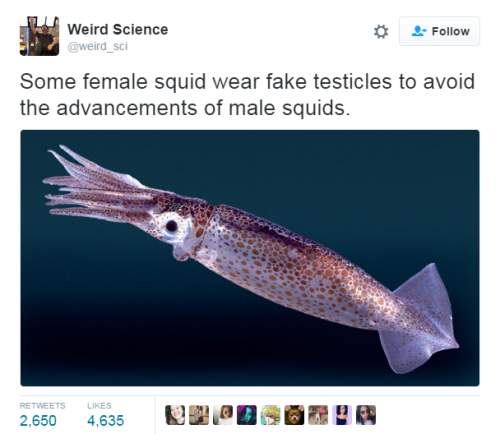
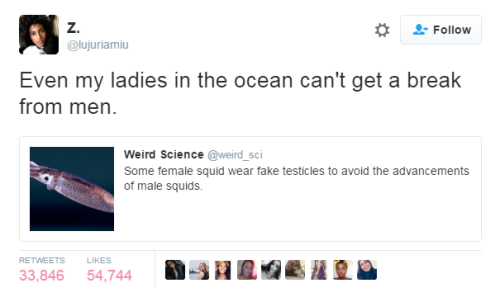
I guess it’s not just men who can’t take “no” for an answer then? Hmm
Here comes the Buck Fever
What is Buck fever? No, it’s not Captain America longing for his “best friend” Bucky, but the inability of some hunters to shoot.

Wow that is so sad. Poor things. And there is no cure... But not to worry for our hunter friends because it’s not a long lasting disease it’s just a moment of embarrassment. So here for you a study basically on hunters shame but with a pretty name on it !
https://www.sciencedaily.com/releases/2016/11/161117115333.htm

BREAKING NEWS on the CCC: Coconut Crab Claws
When you work on biodiversity you have the most breathtaking news every day!
Study founds that coconut crab are the strongest of all !
Everything you ever wanted to know about those babies sweet claws is in here: https://www.sciencedaily.com/releases/2016/11/161123141515.htm

can we get a post going of environmental/conservation progress lately (especially outside of the USA). it can feel so defeating and it’s easy to burn out when you’re surrounded by all the negatives
I feel like we should know more about nature 🌿🍃
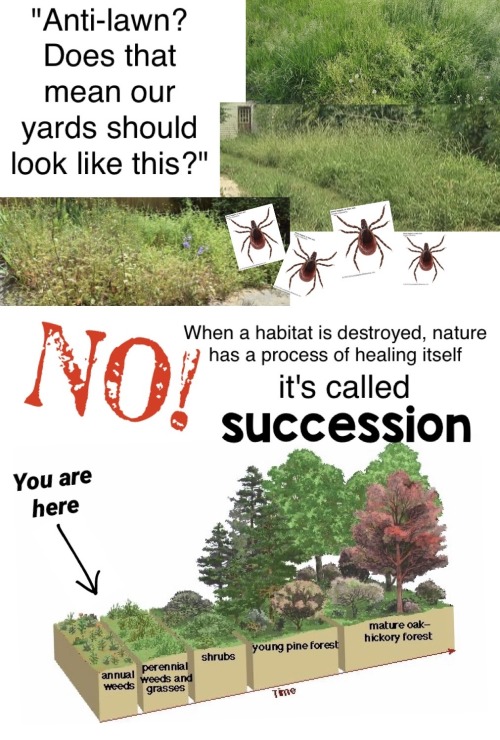
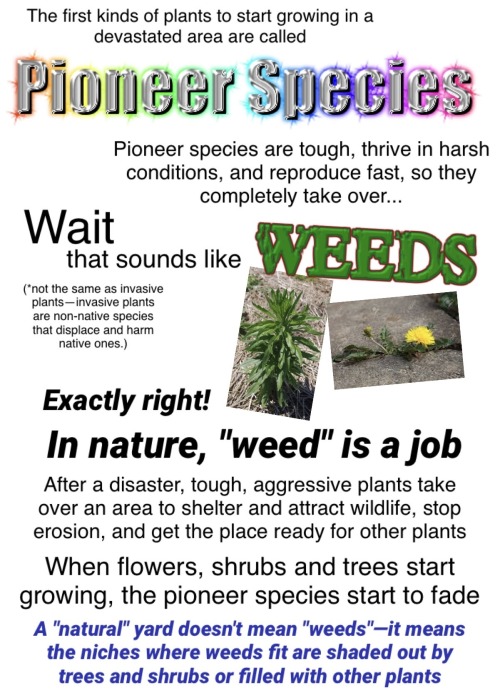
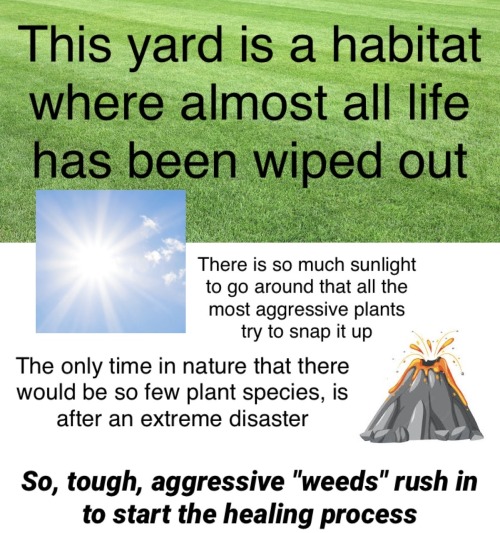
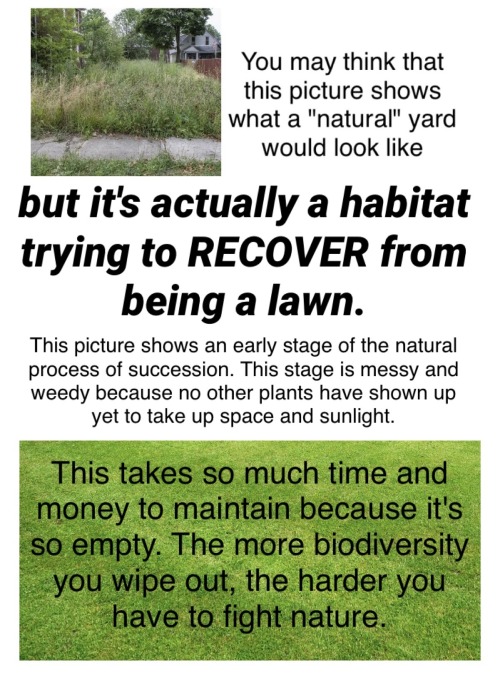
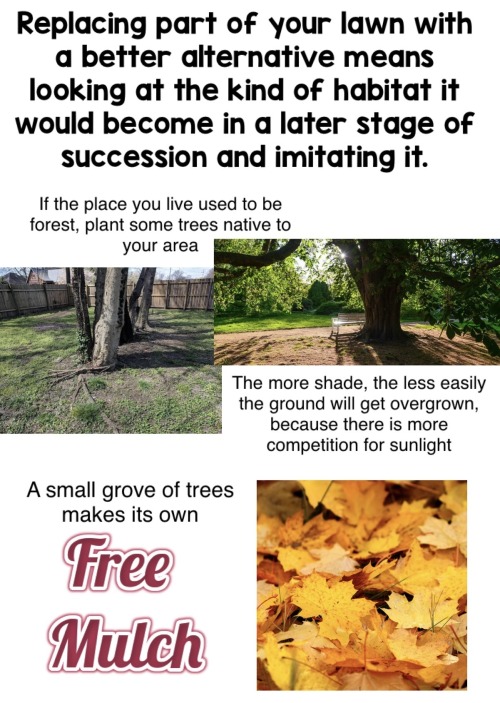

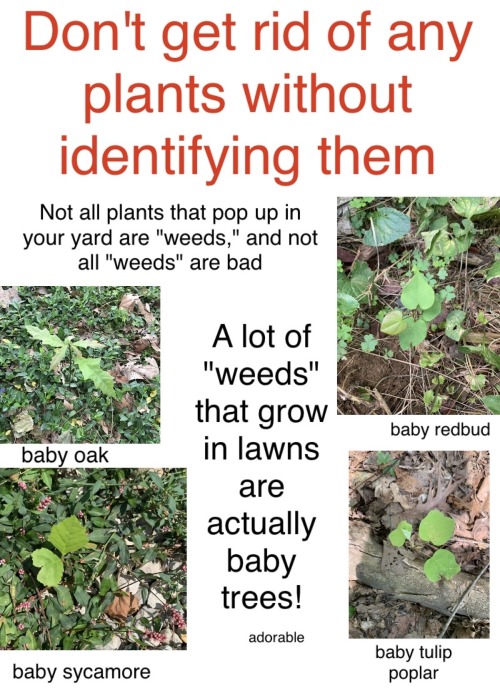
I...tried to make a meme and got carried away and made A Thing that is like partially unfinished because i spent like 3 hours on it and then got tired.
I think this is mostly scientifically accurate but truth be told, there seems to be relatively little research on succession in regards to lawns specifically (as opposed to like, pastures). I am not exaggerating how bad they are for biodiversity though—recent research has referred to them as "ecological deserts."
Feel free to repost, no need for credit

Instagram Store
Eastern Sumatran Rhinoceros.
Also known as the Bornean Sumatran Rhino. According to scientists, this animal is functionally extinct, meaning that the population will be unable to recover. About only 15 individuals exist in the wild. It is the smallest of all three subspecies, making it the smallest among all species of rhinos. Its fur is denser when young but becomes sparse and darker when grows.
The difference between this subspecies and the Western Sumatran Rhinoceros is mainly genetic.
_______________________________________________
Reference: Eastern Sumatran Rhinoceros
_______________________________________________
And with this rhino, I finish all the rhino family. This is my favorite animal and it was so enriching to work on this project because allowed me to know them better and be aware of how close many of them are to extinction (if not already extinct), after having survived millions of years of adaptation through evolution.
Think how sad would be that an animal who has survived the most abrupt changes on earth for thousands of centuries and has shown how strong and adaptative is, will succumb in less than two centuries because of our fault. Thanks again for your appreciation. If you like the content please follow my blog. One animal every week.

Now is the turn of the Equidae Family. Not a huge fan of this family but I most say that it was very interesting to study them. Some of the members of this family are sadly extinct, while many others are on the brink of extinction. This animal has a beauty that is hard to express with words. I guess that is why appear in so many paintings through history.
Feral Horse: The feral horse is a free animal that was once domesticated. Somehow, escaped and become feral. The most famous ones might be the mustangs in North America. However the biggest population is found in Australia with more that 400.000 individuals. In Australia they are called Brumby. They can be found mostly everywhere and it’s name change depending on where is found and what type of breed used to be. Life always will find its way to survive.
I am moving to Instagram eventually: Species of the World My store: Red Bubble store

A poster with all the Tayassuidae species and subspecies along with the conservation status of each of them.
Follow my blog of all the Species I am moving to Instagram eventually: Species of the World
I am selling the poster of the Tapirus (Tapir) family along with the Rhinotermitidae (Rhinoceros). Soon I will put this poster on sale but I want to make some posters for some of the genus of this family.
Have a look following the link: Red Bubble store


White Lipped Peccary
This peccary has five different subspecies. Oddly, I could not find it’s common names. Just the latin ones. Very little information about each of them and more as a general information of the species.
The two main threats to their survival are deforestation and hunting. Natural predators include the jaguar and puma and of course, us. They can be very aggressive when cornered and maintain contact with the herd by making a low moaning sound.
The herds can be immense with up to two hundred individuals, which can be beneficial to avoid attacks from predators, specially the jaguar.
Tayassu pecari pecari: Can be found in Colombia (west), Venezuela, Guayanas y Brasil (north of the Amazon river).
Tayassu pecari aequatore: Colombia (south east) and Ecuador.
Tayassu pecari albirostre: Brasil (South of the Amazon), Peru, Bolivia, Paraguay and north of Argentina.
Tayassu pecari spiradens: From the north of Colombia to Costa Rica.
Tayassu pecari ringens: From Nicaragua to the south of México.
I am moving to Instagram eventually: Species of the World My store: Red Bubble store

Giant Peccary
is a possible fourth species of peccary, discovered in Brazil in 2003. It was formally described in 2007, but the evidence of its status is been questioned for that reason its evaluation in 2008 was resulted in Data Deficient. In 2011 this species was moved to the Collared Peccary but still some believe it might be another species and further studies have to be done to prove it.
I am moving to Instagram eventually: Species of the World My store: Red Bubble store

Chacoan Peccary, Tagua
Due to inhabit in an isolated region of South America, it is very vulnerable to human activity. As soon as is discovered in an area, it disappears. Herds are decreasing rapidly due to habitat loss, fragmentation and hunting. The area where this animal lives is being transformed into ranches, disseminating the species. In order to save the species, a population has been established in North America and some Europeans zoos. Paraguay is also establishing laws to protect it, but they are not highly enforced.
I am moving to Instagram eventually: Species of the World My store: Red Bubble store

Now it’s the turn for the Tayassuidae family, better known as the Peccaries. Closer relatives of the Suidae family (pig) they still belong to a different family. Probably the biggest difference is that all this family inhabit the new continent: America. Let’s begin...
Collared peccary, javelina, saíno, báquiro, musk hog, quenk Collared peccaries are diurnal animals that can live in groups up to 50 individuals. However is ben proved that some animals living in the central Arizona are nocturnal. Usually ignore humans, can attack if feels threatened. As an alarm, can give a sharp bark.
Follow my blog about Species, here. I am moving to Instagram eventually: Species of the World Have a look following the link: Red Bubble store

A poster with all the Phacochoerus subspecies and the conservation status of each of them.
Follow my blog about Species, here. I am moving to Instagram eventually: Species of the World
I am selling the poster of the Tapirus family along with the Rhinotermitidae. Soon I will put this poster on sale but I want to make some posters for some of the genus of this family.
Have a look following the link: Red Bubble store

A poster with all the Babyrousa subspecies and the conservation status of each of them.
Follow my blog about Species, here. I am moving to Instagram eventually: Species of the World
I am selling the poster of the Tapirus family along with the Rhinotermitidae. Soon I will put this poster on sale but I want to make some posters for some of the genus of this family.
Have a look following the link: Red Bubble store

A poster with all the Suidae family, a big one. All the species and subspecies and the conservation status of each of them.
Follow my blog about Species, here. I am moving to Instagram eventually: Species of the World
I am selling the poster of the Tapirus family along with the Rhinotermitidae. Soon I will put this poster on sale but I want to make some posters for some of the genus of this family.
Have a look following the link: Red Bubble store

Babyrousa – deer-pigs
The last one of this big family, the weirdo of the weirdos and one of the most valuable for me, the Babirusa. Since I was a kid I was amazed by this strange animal that tusk can grow so curve that can break its skin and sometimes the skull.
There are many subspecies still to confirm. So far, three are accepted.
Moluccan Babirusa: This species is poorly known because many of the studies done to this species, where actually done to another subspecies, the North Sulawesi Babirusa.
Togian babirusa: As usual the main threat of this species is the destruction of this habitat. It is also tracked if the animal eats the crops of the villagers. However, the animal is not eaten by the people because the population is mostly muslim therefore, refuse to eat pork.
North Sulawesi Babirusa: In 2006, a male North Sulawesi Babirusa and a female domestic pig were accidentally allowed to interbreed in the Copenhagen Zoo. The offspring were 5 hybrid piglets with teeth most resembling the North Sulawesi Babirusa, while their color was highly variable.
I’ve been having trouble with Tumblr. My post simply don’t appear in the search no matter how strange are my tags. Tumbler didn’t give me any solution so I decided to move to Instagram. I already open an account so if you want to follow me, just click on the link: Species of the World I will keep posting here until I updated my instagram account. Thanks for the support.
Next, some nice posters of all the boar family and the peccary family.
Check out my store here Follow my blog about Species, here

Kabonabi Tapir
This Tapir is relatively new discovered. Although The ex-president Roosevelt shoot one in 1914 and named as a new species, the scientific Marc G. M. Van Roosmalen discredited in 2000, Until it was named as a new species in 2013.
However, the aboriginals that inhabit the Amazon knew that they coexisted with two different species of Tapirs, the Amazon Tapir and the Kabonabi Tapir. This was principally due to the difference in coloration and size. In Brazil, the Kabonabi’s tapir is called danta pretinho, which means Little Black Tapir.
Its status is unknown but is believed to be vulnerable.
Follow my blog about Species, here.

A poster with all the rhinocerontidae family. All the species and subspecies and the conservation status of each of them.
Follow my blog about Species, here.

